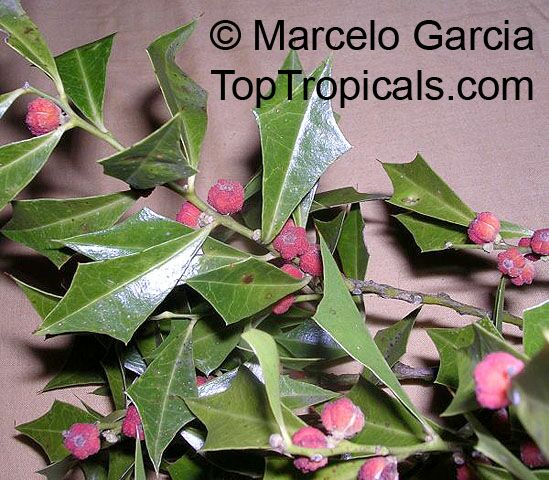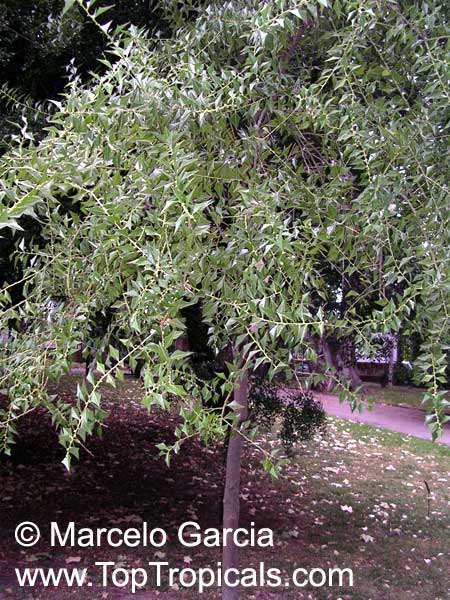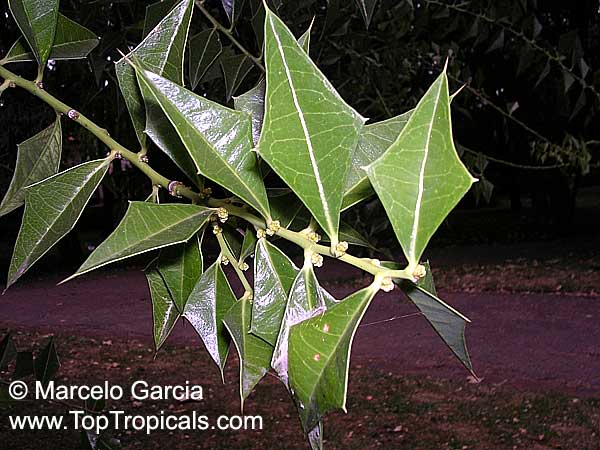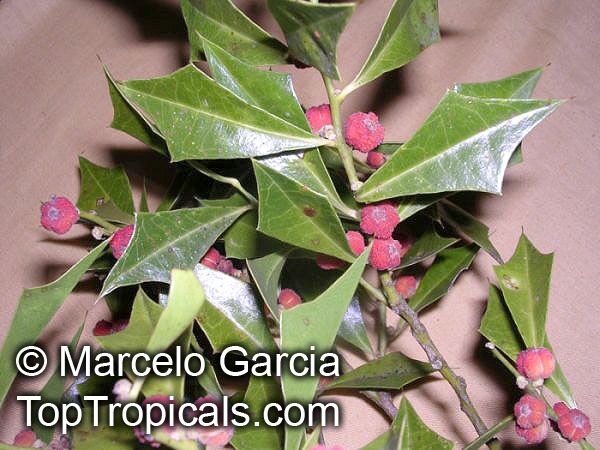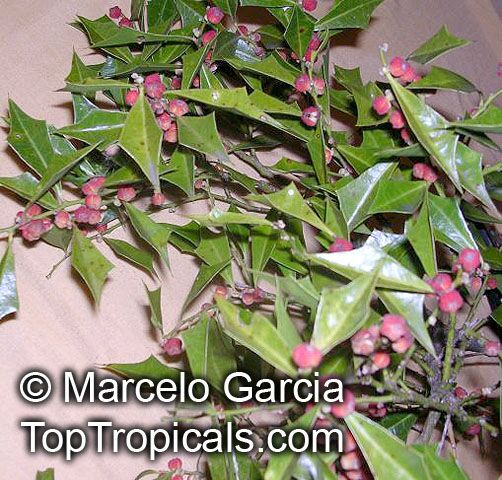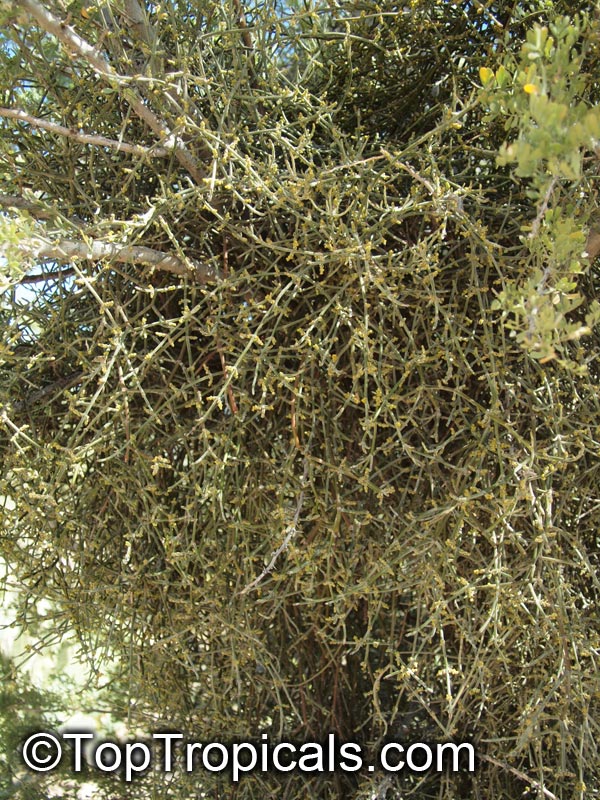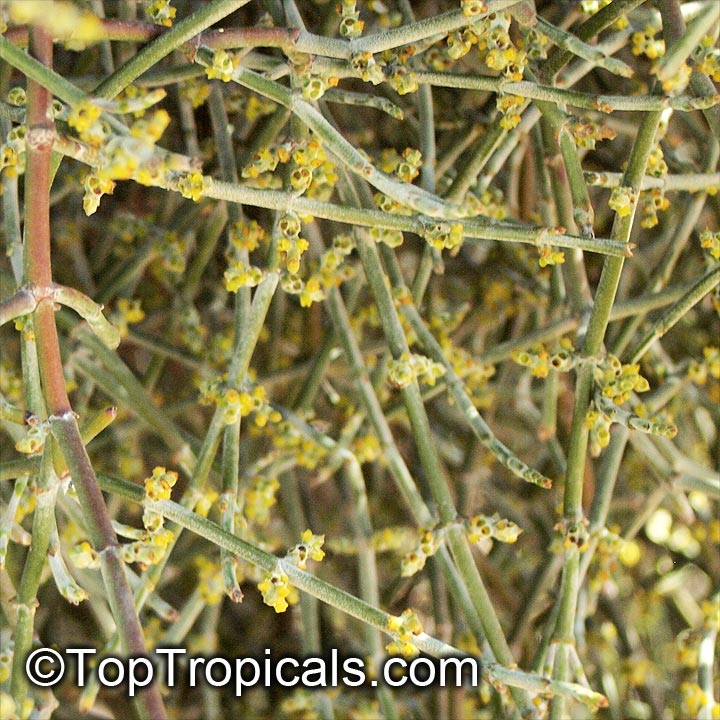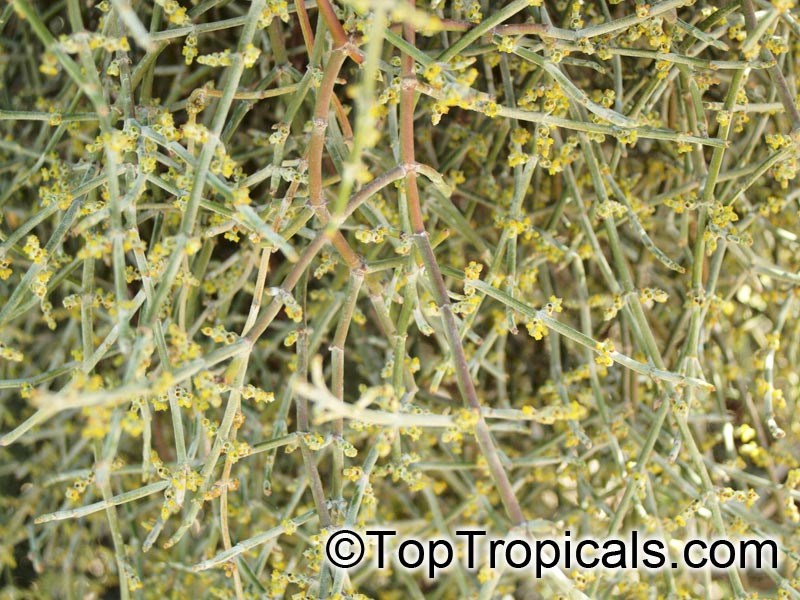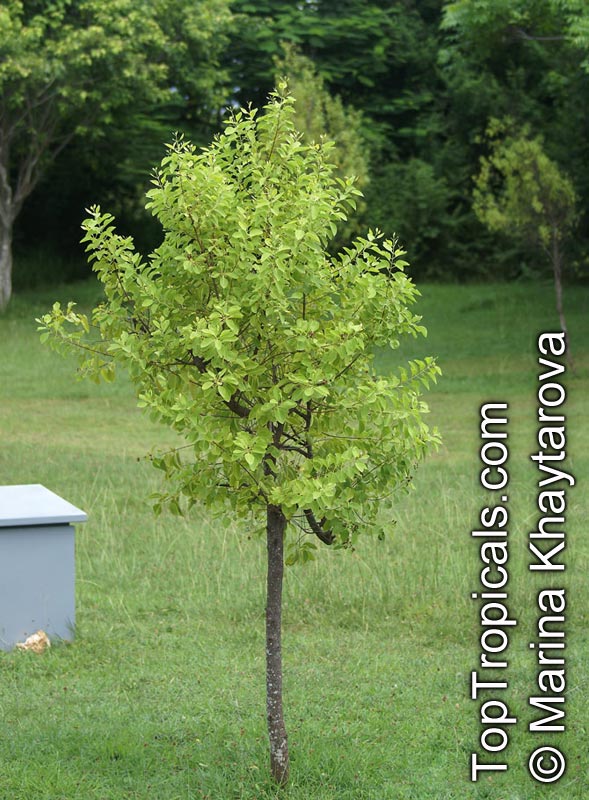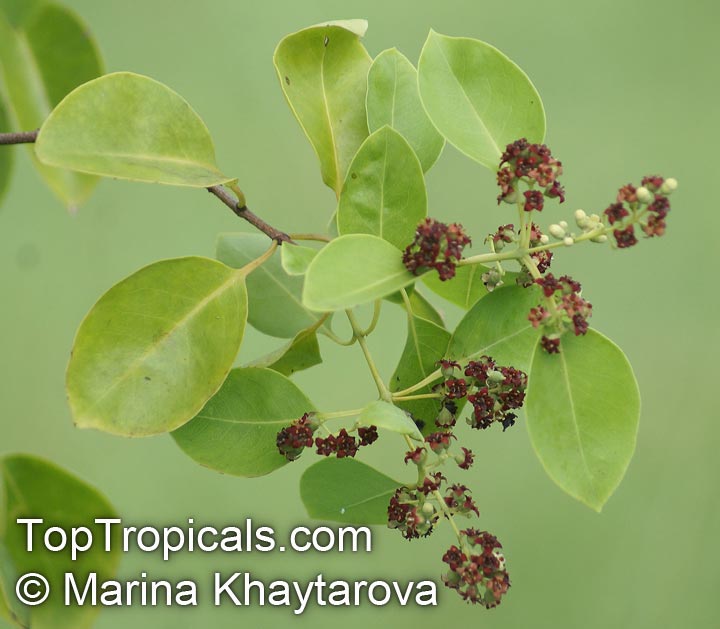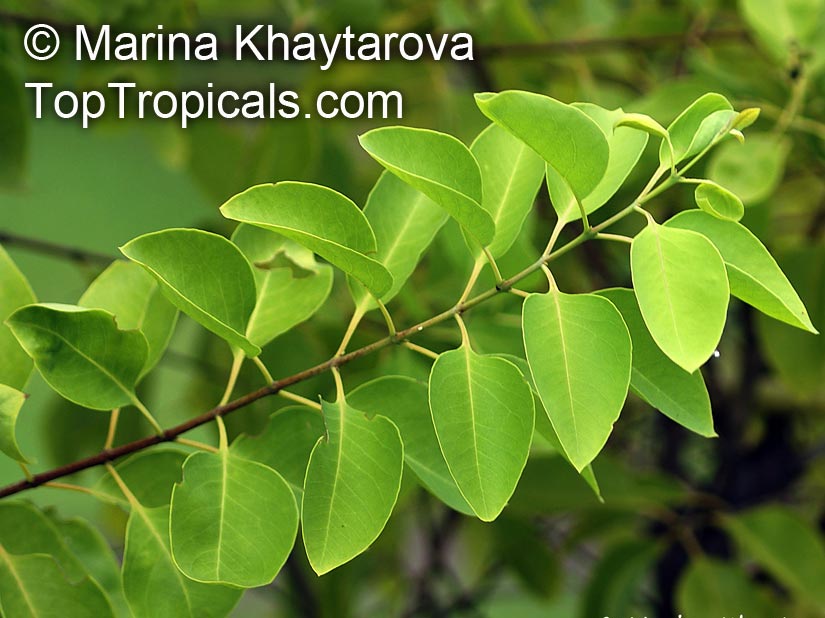Santalaceae - Botanical Family
Top Tropicals Plant Encyclopedia
| Number of plants found: 3 |
Botanical names: Iodina rhombifolia, Jodina rhombifolia
Common name: Sombra de Toro
Family: Santalaceae
Origin: Southern America






Botanical name: Phoradendron californicum
Common names: Desert Mistletoe, Mesquite Mistletoe
Family: Santalaceae
Origin: California, Arizona








Phoradendron californicum is a leafless plant that attaches to host plants, often leguminous woody desert trees such as Cercidium and Prosopis.
The plants are dioecious with tiny, inconspicuous, yellowish flowers. The female plants produce numerous, spherical, translucent, white, pink, or red berries that are adored by fruit-eating birds.
Desert Mistletoe plants, but not the berries, contain phoratoxins which can easily lead to death. The white to reddish fruits are edible, but native tribes ate only the fruits of mistletoes growing on Prosopis, Olneya tesota or Acacia greggii.
Botanical name: Santalum album
Common names: Sandalwood, Chandana
Family: Santalaceae
Origin: India







Sandalwood is a small tree that grows primarily in India. The wood of its stem, which grows from 20 to 30 feet high, is heavy and straight-grained and varies in color from white when young to yellow or orange when older. its oval leaves are covered with a whitish bloom; its small flowers, varying in color, grow in numerous cymes.
In traditional Chinese medicine, sandalwood oil is considered an excellent sedating agent.
The medicinal properties of sandalwood reside in the oil, which can be pressed from the wood or extracted with alcohol or water. The antiseptic and disinfectant properties of this oil are similar to those of cubeb oil. The oil can also be used for bronchitis and for inflammation in mucous tissue. A decoction of the wood may be helpful for indigestion and fever and externally for skin problems, especially those of bacterial origin.
Sandalwood is known as a hemiparasite or semi-root parasite and requires a range of suitable host plants for its nutrition and moisture requirements. It preferrs to be grown alongside leguminous plants such as Acacias or any other leguminous tree or shrub.
Use link to repeat this search:
https://toptropicals.com/cgi-bin/garden_catalog/cat.cgi?search_op=and&keyword_op=and&language=e&family=Santalaceae&number=10
&no_change_lang=1&user=tt&sale=1&first=0
